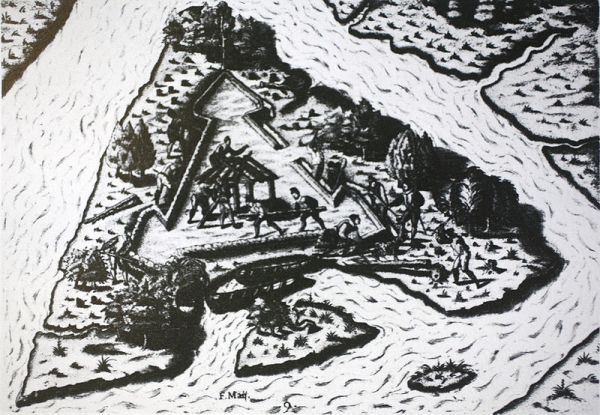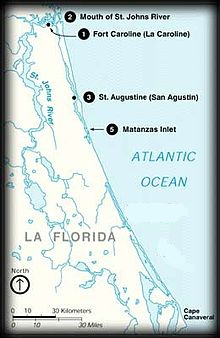
On September 22, 1565, a hurricane struck a French fleet sent to support Fort Caroline in Florida. The survivors were hunted down by the Spanish and slaughtered, ensuring Spanish control of La Florida.

Although Spain had laid claim to Florida following the explorations of Juan Ponce de Leon in 1513, in this contentious period of exploration and colonization by European countries, claims had to be backed up by power. In 1564, French Protestants (Huguenots) established a colony (Fort Caroline) in northeast Florida. To enforce his own claim on the land, King Phillip II of Spain dispatched Pedro Menéndez de Avilés with 10 ships and some 1500 men to establish a Spanish settlement and oust the French. Arriving in September of 1565, he founded the colony of St. Augustine. At the same time, a French fleet under Jean Ribault, arrived to resupply Ft. Caroline. Avilés promptly dispatched a military expedition to Fort Caroline, thirty miles to the north of St. Augustine. He captured the settlement and hung the French settlers he captured there. Ribault’s fleet attempted to attack St. Augustine while the Spanish soldiers were away from their colony, but encountered a hurricane which forced their ships onto the shore. Avilés’s soldiers caught up with the fleet survivors near an inlet ten miles south of St. Augustine. The French surrendered after the Spanish promised mercy. However, Avilés had them led off in small groups behind a nearby sand dune where they were slaughtered out of sight of the others. The nearby channel was thereafter named Matanzas (Massacre) Inlet.